This post is part of Snoopathon, a Blogathon of Spies, hosted by Fritzi at Movies Silently. This post contains descriptions of racist language and caricatures. Needless to say, I don't approve of such things. Be sure to click on most images to see larger versions.
Japanese spies, zombies, caped crusaders, a radium gun, an alligator pit and Ming the Merciless -- you can't go wrong with the 1943 Columbia movie serial Batman. Well, actually, you could go wrong in a few ways. There is a lot of racism directed at the villain, Doctor Daka and his countrymen. Columbia serials are not highly regarded by many serial lovers because of their minuscule budgets. Every movie serial, especially 15-chapter serials like this one, has moments that drag. Every movie serial has ludicrous plot elements. On the other hand, Japanese spies, zombies, caped crusaders, a radium gun, an alligator pit and Ming the Merciless -- that's pretty cool.
 |
| www.coverbrowser.com |
Bob Kane's The Batman, as he was called in the early years and sometimes in the movie serial, made his debut in Detective Comics number 27, 75 years ago last month in May, 1939. I've been a fan of Batman since I first saw the television show and read the comic books back in the 1960s. Superman has his powers because he was born on another planet. Spiderman has his because he was bitten by a radioactive spider. Batman is a self-made man.
 |
| www.coverbrowser.com |
In addition to appearing in Detective Comics, Batman got his own book, Batman Comics. His sidekick, Robin the Boy Wonder, the subject of much mockery, made his debut in Batman number 1 in April 1940.
+ |
| www.coverbrowser.com |
America entered World War II after the Empire of Japan launched a sneak attack on the naval base at Pearl Harbor in the Territory of Hawaii on 07-December-1941. Batman and Robin soon started to do their part. On the cover of Batman number 18, August-September, 1943, Batman and Robin use a large firecracker to celebrate the Fourth of July (comic books were usually dated later than the months when they appeared on the newsstands) and blow up Emperor Hirohito, Adolph Hitler, and Benito Mussolini. The cover promotes the sale of War Stamps and War Bonds, to pay for the war effort.
Columbia Pictures started in 1918 as Cohn-Brandt-Cohn Film Sales, founded by Joe Brandt and brothers Jack and Harry Cohn. CBC produced short films like the Hallroom Boys comedies, then started making features in 1922. In 1924, Brandt left and CBC changed its name to Columbia Pictures, but it remained part of Hollywood's Poverty Row, centered around Gower Street. Harry Cohn became the most powerful person in the studio and remained in control for 34 years.
Director Frank Capra joined Columbia in 1927 and helped it to become one of the major studios, although it was always considered to be in the lower ranks of the majors. Columbia continued to produce short comedies. Columbia's most famous series was the Three Stooges. Columbia Pictures survives today as a subsidiary of Sony Corporation.
Movie serials were usually a collection of two-reel episodes that became standardized at 12 or 15 chapters during the sound era. Each episode except the last usually ended with a cliffhanger, a suspenseful situation that would be resolved at the beginning of the next episode. A significant number of silent serials had female protagonists (The Perils of Pauline, The Exploits of Elaine, The Mysteries of Myra -- serial producers liked alliteration), or featured a team like Grace Cunard and Francis Ford, John's older brother. Coincidentally, Pearl of the Army, starring Pearl White, the first serial queen, was about spies. Most sound serials had male heroes.
Universal produced many serials during both the silent and sound eras. Flash Gordon, starring Buster Crabbe as Flash, Jean Rogers as Dale Arden and Charles Middleton as Ming the Merciless, is one of my favorites.
Mascot was a minor company that made a lot of serials during the sound era, including The Miracle Rider, Tom Mix's last movie.
Mascot merged with a couple of other companies to create Republic Pictures, which made many of the most fondly remembered sound serials. The Adventures of Captain Marvel, from 1940, was the first serial based on a comic book character.
Columbia Pictures began producing movie serials in 1937, and continued making them until 1956, after both Universal and Republic had stopped.
Like Batman, many of Columbia's serials were adapted from other forms of entertainment, including The Phantom and Terry and the Pirates (comic strips), Captain Midnight and The Shadow (radio), The Spider's Web (pulp magazines) and Superman and Blackhawk (comic books).
Serials almost always had teams of writers because of the amount of script needed to fill 12 or 15 chapters. Victor McLeod and Harry Fraser worked on short films, B features, other serials and television shows. Almost all of Leslie Swabacker's credits are for serials.
After Superman became a great success, the editors of Detective Comics wanted a superhero for their book. Bob Kane took inspiration from The Mark of Zorro with Douglas Fairbanks, Leonardo da Vinci's designs for flying machines and Roland West's 1930 movie The Bat Whispers to come up with The Bat-Man, a caped avenger. Artist Bill Finger helped to shape the appearance of The Bat-Man and wrote many of the early stories. Bob Kane was smart enough, smarter than Superman's creators Jerry Siegel and Joe Shuster, to get sole credit for the character, which appeared in every comic book and movie.
Cinematographer James S Brown, Jr was not the Godfather of Soul and did not sing "Papa's Got A Brand New Bag" or "Say It Loud – I'm Black and I'm Proud." Editor Dwight Caldwell went on to do a lot of television, while in 1956 Earl Turner edited Blazing the Overland Trail, the last serial produced by Columbia and the last movie serial produced by a major studio in the United States. Lee Zahler wrote or arranged music for many movies. In Batman, he used a lot of Wagner. Wagner's music, in the public domain, was very popular in serials.
Producer Rudolph C Flothow did many Columbia serials including The Phantom, The Monster and the Ape, and The Black Arrow, and many series including Crime Doctor, Boston Blackie and The Whistler.
We should pause for a moment of silence to remember and respect the career of Batman's director, Lambert Hillyer. Early in his career, he directed many of the movies of William S Hart, including The Toll Gate, Three Word Brand and The Testing Block. In the 1920s, Hillyer directed Tom Mix in The Lone Star Ranger and Mile-a-Minute Romeo. The latter title would never be confused with a William S Hart movie. In the 1920s and 1930s, Hillyer directed features and serials starring Buck Jones, including Chain Lightning, Hello Trouble and The White Eagle, which became the source of much stock footage used in later western serials. In the later 1930s, he directed his two most-remembered A movies, Dracula's Daughter with Gloria Holden and The Invisible Ray with Karloff and Lugosi. In the 1940s, Hillyer directed a lot of B westerns starring Wild Bill Elliot, Johnny Mack Brown, Jimmy Wakely and Whip Wilson (no kidding). In the 1950s, Hillyer directed television series.
Each chapter of a movie serial had a title which would sometimes have something to do with the story. Often it would refer to the upcoming cliffhanger, or at times it would refer to a major gimmick. "The Electrical Brain" refers to a major gimmick. I like the Batman background used in all these title cards. I'm going to go through the first chapter in some detail, in the hope that this will get people hooked and make them want to see the serial. Please be aware that spoilers lurk ahead.
The episode begins with an establishing shot of a stately mansion. The urgent narration of Knox Manning, who had a manly voice suitable to his name, tells us that "High atop one of the hills which ring the teeming metropolis of Gotham City, a large house rears its bulk against the dark skies. Outwardly, there is nothing to distinguish this house from many others."
"But deep in the cavernous basement of this house, in a chamber hewn from the living rock of the mountain, is the strange, dimly lighted, mysteriously secret Bat Cave, hidden headquarters of America's number one crime fighter, Batman." The movie introduced the Batcave to the Batman mythology. It was later adopted by the comic books. The camera trucks forward. "Yes, Batman, clad in the somber costume which has struck terror to the heart of many a swaggering denizen of the underworld. Batman, who even now is pondering the plans of a new assault against the forces of crime, a crushing blow against evil..."
"...in which he will have the valuable aid of his young, two-fisted assistant, Robin, the Boy Wonder." They exit the scene together. Knox Manning narrates a series of vignettes showing Batman and Robin foiling various criminal acts. I was impressed that none of these scenes appeared later in the serial. "They represent American youth who love their country and are glad to fight for it... And in this very hour when the Axis criminals are spreading their evil over the world, even within our own land, Batman and Robin stand ready to fight them -- to the death."
Lewis Wilson, who played Batman was only 23 years old. He was a big, athletic man and he fit the part. Wilson was born in New York and died in San Francisco, but he had what sounds like a Boston accent. It may have been an old-fashioned upper-class Eastern accent, which suits wealthy Bruce Wayne perfectly. In any event, my favorite moment came in chapter 14 when Batman asked Robin to "get the crow bah from the cah."
Douglas Croft, who played Robin, was 16 or 17. He was probably the only actor who has played Robin as if he was an adolescent kid. The Intenet Movie Database says he was the youngest person to play Robin. Croft had a wild head of hair. I enjoyed his performance, but I worried about Robin because he kept getting knocked out. Sadly, Croft died in 1963, when he was 37.
A black 1939 Cadillac convertible screeches to a stop next to a police call box. The car stands in for the Batmobile in this movie. Batman and Robin jump out. Batman fishes in his utility belt while Robin says "These boxes are usually locked." Batman says "I know it" and opens the box with a key. He lifts the phone and says "Captain Arnold (Ah-nold) please."
We don't have Commissioner Gordon, who was in the comic books from the beginning. Instead we have Captain Arnold, played by Charles C Wilson, whom you might recognize from a bunch of Frank Capra movies. We see him answer the phone in his office. "I have a nice little package for you," says Batman. Arnold hangs up and tells Detective Eberle, played by Al Hill, who was in The Bank Dick with WC Fields, that they need to go to First and Maple.
We see Batman and Robin handcuffing two crooks around a lamppost. One tells Batman that "Doctor Daka will make you regret this." "Doctor Daka? Who is that?" asks Batman. The other crook tells his companion to shut up.
Robin wants to wait and see Captain Arnold's face, but Batman says he has a date, so they jump into the Batmobile and drive away.
Captain Arnold arrives a moment later and finds the two crooks with bat symbols stamped on their foreheads. He opens a note pinned to the lapel of one crook. It explains that these are the last two members of the Collins gang and "the keys to the handcuffs are in this one's pocket." "Well," says Captain Arnold, "it looks as though the Batman has done you boys another favor." "You ought to put him on the force" says Eberle. "You find him and I'll put him on the force."
We dissolve to a shiny plaque saying "Gotham City Foundation." A young woman in a lab coat crosses an office and sits down at a typewriter. She is Linda Page, played by Shirley Patterson. I have seen several writers remark that she is more attractive than the average movie serial leading lady. She played a lot of small parts and in later years changed her professional name to Shawn Smith.
Bruce Wayne and Dick Grayson enter the office. Linda says they will have to wait a bit. Bruce reclines in a chair and says that is fine because he hopes it will settle his nerves. Linda tells Dick to get his hands off of her papers. She says to Bruce "You've had your usual busy day, I suppose." He replies "Up at the crack of noon, a brisk walk to the corner and then to the club for a rugged afternoon of gin rummy."
Linda gives him the look seen above, which I never like to get from my wife. "Maybe you'll be too tired to go with me tomorrow to meet Uncle Martin." Bruce says he will go. Linda thanks him and says "It will mean so much to him to know he still has friends in spite all that trouble he was in." Bruce hopes they won't have to leave too early.
Linda leaves the room and Dick leans over Bruce's shoulder and says "You're liable to carry this masquerade too far...Why don't you let her know who you really are instead of letting her think you're just a good-for-nothing playboy?" "If I let her know I was the Batman, she might worry. Not that she cares anything about me. Besides, on account of our special assignment from Uncle Sam, our success depends on keeping our identity a secret." This is the first mention of Batman and Robin working for the government. Some people have speculated that the Production Code office, which reviewed all scripts, would not let Batman and Robin be vigilantes, and it also answers the next question. "Suppose she asks you about your status in the Army?" "I can always tell her I'm 4-F." 4-F was a Selective Service Administration status that indicated that a person was not fit for military service.
Linda returns wearing a coat and a remarkable hat and leaves the office with Bruce and Dick.
On the sidewalk, they stop to buy a newspaper about the Batman stopping the Collins gang. Linda says Batman is marvelous and Bruce says he is a show-off.
We see a black Packard auto (the color is important) outside of an industrial-looking building. A quick pan shows us that we are outside of the main gate of a prison.
Two guards let an older man leave.
Three crooked-looking men are in the black car. "That looks like Warren." Foster, the one on the left agrees, saying "My old cellmate." Foster is played by Robert Fiske. I thought I recognized him from a Three Stooges movie, but I couldn't find any connections in the IMDB.
Foster and one of his companions greet Warren. Uncle Martin says he is expecting his niece. Foster says his niece can't make it so they will take him to her.
The black Packard sedan pulls away as Bruce Wayne's car, with the top down, arrives. "That looked like my niece" says Warren. Foster tells him to him pipe down, sit back and relax. "What do you want from me?" "You'll find out soon enough."
Linda approaches the guards at the gate and they tell her that two men met her uncle and they left in a black sedan. Linda tells Bruce about the black sedan. Bruce says they will catch the black sedan. "Get going, Alfred." This is the first appearance in any medium of Alfred Pennyworth, the Wayne family butler, who does more chauffeuring than butling in this movie. Alfred was played by William Austin, who was in a lot of movies including It with Clara Bow, "County Hospital" with Laurel and Hardy and The Gay Divorcee with Fred Astaire and Ginger Rogers.
The crooks notice they are being followed. They try to speed up, but the Cadillac stays behind them. "We're out of sight," says Foster. "Release the gas and make the change." We see the license plate flip from light characters on a dark background to dark characters on a light background. Then, in a side view of the black sedan, we see if turn into a white sedan. That was a pretty decent special effect, apparently done using light and shadow. The crooks turn around and drive slowly. Everyone but the driver ducks. Bruce and company drive by without noticing.
We cut to a tracking shot of a street with store signs in Japanese characters and a for rent sign in a window. "This was part of a foreign land transported bodily to America and known as Little Tokyo. Since a wise government rounded up the shifty-eyed Japs it has become a ghost street where only one business survived, eking out a precarious existence on the dimes of curiosity seekers." I don't know of another Hollywood movie made during the war that mentioned Japanese internment. Over 100,000 Japanese-Americans from the Pacific coast were sent to internment camps even though there was no evidence that any of them had participated in espionage or sabotage. Germans and Italians only got interned if they supported the Nazis or the Fascists and did something about it. Japanese-Hawaiians were not interned because it would have destroyed the economy of the islands.
The tracking shot ends on the entrance to the Cave of Horrors, where a barker tells of the wonderful waxworks. We pan back and see the white sedan arrive and Foster and another crook get out with Uncle Martin.
They walk past the barker and get into one of the ride cars. An attendant pushes the car to start it into the tunnel.
They pass various scenes of Japanese war atrocities. This one appears to show two Japanese soldiers forcing an American prisoner to dig his own grave. Others include Japanese soldiers preparing to execute a woman and Japanese soldiers guarding an American officer who is locked in a small cage.
The car stops next to a strange scene of a large man in a short skirt (?) holding a club over a man lying on the ground. I'm not sure what this has to do with Japanese atrocities. Perhaps it is a fashion atrocity. The crooks get out of the car with Uncle Martin.
We cut to a shot of the big guy, who turns out to be a real person, who guards a hidden doorway.
A door in the wall swings open and a voice with a ridiculous accent says "Come in, Mister Warren." We see a group of men sitting around a table. "The League of the New Order extends a cordial welcome to our honored guest," says the man at the head of the table. "The League of the New Order?" says Uncle Martin.
The man at the head of the table lights a cigarette in a long holder. "Yes. A group of men, all of them dishonored like yourself." Uncle Martin insists he was convicted wrongly. The sort-of-Japanese-looking man with the cigarette is played by J Carrol Naish, a character actor who was famous for playing ethnic characters. He was the star of "Life With Luigi" on the radio and early television. He was Sitting Bull in the movie of the same name. He was a Chinese character in The Hatchet Man. The man with the cigarette introduces the other dishonored men around the table, Fletcher, an architect whose buildings didn't stand up, Marshall, Preston and Wallace.
Uncle Martin interrupts him to asks what they want of him, but the man with the cigarette stands and says "I am Doctor Daka, humble servant of his majesty, Hirohito, heavenly ruler and prince of the rising sun. By divine destiny, my country shall destroy the democratic forces of evil in the United States to make way for the New Order, an order that will bring about the liberation of the enslaved people of America. Each of these men, dishonored by your corrupt form of government is a specialist in his line and has been especially selected by me to execute the orders I receive from Tokyo. We need an industrialist to round out our circle That is why I selected you. If you cooperate with us willingly, you shall share in the glorious victory sought to be ours." "And if I refuse?" "You have no choice but to accept. You will work with us or be compelled to work for us. Therefore it should be very plain to you that you should be willing to help serve my glorious emperor."
"Listen Daka, or whatever your name is. I owe my allegiance to no country or order but my own. I'm an American first and always and no amount of torture conceived by your twisted Oriental brain will make me change my mind." Gus Glassmire, who played Uncle Martin, does a fine job with this speech. He played a lot of small parts in a lot of movies.
Doctor Daka replies "But you are laboring under a great misapprehension. I do not believe in anything so barbaric as torture." Daka pronounces "torture" with relish. He picks up a microphone and says "Wells."
A panel in the wall behind opens and a man with a strange-looking device on his head and a vacant look in his eyes walks through.
Uncle Martin approaches and says "Bob." Daka says "Your former partner. He was our first choice for the position you are about to assume. Unfortunately, he too attempted to resist the inevitable." Uncle Martin says "Bob, old man, don't you know me?" but gets no reaction from Bob. "What have you done to him?" Daka crosses behind and says "Deprived him of his ability to think. I have converted him into a zombie. He can only act as I direct. You will notice the metal headpiece from which a wire leads to the spine. Now, Mr Warren, I would like you to look at this special microphone -- the only means of communication with the zombie. When I speak into it, this slave gets the impulses through the headpiece and obeys my wishes. By this means, I have him carry out my orders, no matter how far he is from me. Interesting, isn't it? Wells, return to your station." A little light flashes on atop the headpiece when Daka communicates with the zombies. Bob the zombie does an about-face and leaves through the sliding panel.
"Now what is your answer?" "It's still the same," says Uncle Martin as he turns to run. Foster and Marshall grab him. "Take him to my electronic laboratory." As they march him across the room, Daka speaks into the microphone, "Pat (?) and Jones, the door." A set of double doors opens and we see a pair of zombies pushing them from the other side.
Foster and Marshall march Uncle Martin down a creepy-looking stairway, followed by the rest of the League of the New Order and Doctor Daka. Foster and Marshall push Uncle Martin into a chair while Daka removes his jacket and puts on a lab coat with the help of one of the League members. "I'm not going to destroy your brain at this time because you have information which I must have while you still have your memory." "I'll tell you nothing."
Daka asks Fletcher for the serum. Brandishing a large hypodermic syringe, Daka says "Have you ever heard of the truth serum, Mr Warren? It is one of the Order's favorite weapons...You are one of the men who endowed the Gotham City Foundation, therefore you should be able to give me the information which I need." He gives Uncle Martin a shot and begins questioning him. "How much radium have they on hand at the Gotham City Foundation?" "Several grams." "Where do they keep it?" "In the safe behind the picture in Doctor Borden's dispensary." "Do you know the combination?" "No I do not." Daka tells Preston to "Lock him up."
Daka tells his minions "Fortunately, I do not have to have the combination." Foster asks "How are we going to crack it? What do you want that radium for?" "I will show you." Daka picks up the microphone and tells the door zombies "The block." Daka retrieves a funny-looking gun from a cabinet and shows it to his men. "Gentlemen, this is the secret weapon of the New Order." He hands a box to Marshall and asks for a capsule. Daka places the capsule in the gun, saying "This weapon employs an infinitesimal amount of radium. It is a small yet deadly forerunner of the atom smasher, which when perfected will smash anything that lies in our way to victory."
The door zombies arrive carrying a block of concrete. Daka picks up the microphone and tells them to put it down and return to their stations. "I would walk over this way, gentlemen, if I were you," Daka tells his minions. He shows Foster that there are several settings, "But the weakest will suffice...Now watch what happens to that solid block of cement." He points the gun and fires.
The block of concrete explodes, leaving only smoke and rubble. Daka and his crew look at the remains. "Gentlemen, this block was originally concrete." He picks up a chunk of concrete, squeezes it, and it crumbles to dust. "Now you understand why I must have more radium...We can build a lethal mechanism so destructive as to make retaliation by the United Nations impossible." During World War II, the Allies who fought against the Axis Powers were often referred to as the United Nations. "However, this weapon will suffice to open the safe at the Gotham City Foundation. And I am giving you," he hands the gun to Foster, "that assignment." Foster looks scared as the scene dissolves.
Linda, Bruce and Dick are in her office at the Gotham City Foundation. She is worried about Uncle Martin. Bruce assures her that he is all right. "If you'd gotten up a little bit earlier this morning," says Linda, "we'd have been there to meet him." Bruce says "From now on, I'm turning over a new leaf. I'll be very dependable." Linda does not look convinced. Bruce says he'll do anything she tells him to do. She tells them both to get out because "Doctor Borden will be here any minute and I have a lot of typing to do."
Bruce suggests that Linda call the prison to see if the guards recognized the men who picked up Uncle Martin. Linda calls and we cut to Foster, another crook and a zombie tearing down the street in a black sedan. The other crook says "I don't mind robbing the safe, but what do we got to bring this zombie for?" I don't blame him. The zombie looks pretty creepy in the back seat. In the front seat, Foster has a strange expression. Foster says "One reason is, he's strong as a bull. Another is that Daka can switch on that magic eye and watch him. Us, too, if we're close enough to him." This must be television. Foster speculates that Daka is watching them at that moment.
Linda hangs up the phone and tells Bruce and Dick "The guard didn't know who the men were." Bruce and Dick say goodbye to Linda. We see the crooks arrive out front and watch a laundry truck pull into the building.
Bruce and Dick leave the building and approach the Cadillac, where Alfred waits. Bruce says "Look, that's the car we were chasing this morning." "Sure looks like it," says Dick." "Those three men just alighted from it, sir," says Alfred. The crooks enter the building. "And Martin Warren isn't with them," says Bruce. "I have an idea the Batman should look into this," he says, stepping into the car. "And don't forget Robin," says Dick, jumping in after him. "Alfred, drive into that alley and put the top up." Bruce opens a large briefcase and pulls out the cowl of his costume.
The crooks and the zombie get off an elevator. They enter the office and Linda talks to them, thinking they are Doctor Borden. When she sees that they are not, she screams and Foster has his non-zombie companion put her in the other room.
Meanwhile out in the alley, Batman and Robin start to climb the fire escape.
Foster searches behind pictures until he finds the safe.
Doctor Borden gets off the elevator and enters the office. "What's going on here?" he demands. He sees the zombie and says "Why Doctor Heath, my old colleague, what are you doing here?" The zombie doctor grabs him by the throat and strangles him. Foster gets the radium gun as the other crook returns. "Here's the laundry bag," says the other crook. "Get something to stuff it with," says Foster.
Batman and Robin get to the roof.
Foster uses the radium gun to blast open the safe. Foster places the radium in the laundry bag. Batman and Robin throw a rope over the side of the roof and climb down. Foster and the other crook are closing the laundry bag.
They throw the bag down the laundry chute as Batman bursts through the window. "The Batman," says the other crook. The bad guys run for the stairs, pursued by Batman and Robin.
Up on the roof, Foster lifts the radium gun and fires at Batman and Robin when they reach the top of the stairs. Batman and Robin dodge aside and duck behind the house covering the top of the stairs. They run up the sloping back and jump down the other side while the crooks look for them. They hide behind a chimney, which Foster blasts.
They jump out from another spot and attack the crooks.
While the fight rages on the roof, Linda wakes up on the floor. She gets up and calls the operator, asking her to get the police.
Robin fights one of the crooks. Seemingly stunned, he ducks so the crook punches the wall. Then Robin kicks him in the shin.
Batman fights Foster and the zombie doctor near the edge of the roof. Note Batman's wrinkled tights.
An accomplice of the crooks carries the laundry bag with the radium to the laundry truck. We hear sirens in the background.
He uses a radio in the glove compartment to report to Dr Daka that the police are on their way to the hospital. Daka wants to know if he has the radium, and tells him to return at once. I like this shot.
Daka turns on his television. Television did not become common in the United States until after the war.
Daka sees the zombie doctor bend Batman over the parapet. The "magic eye" that Foster talked about must not be a camera mounted on the zombie doctor or his headpiece, since it shows the zombie doctor and Batman.
Daka picks up the zombie microphone. His desk is poorly laid out. He has to turn away from the television screen to use the zombie microphone. "Hayden (?) leave the roof," he says twice. I thought the zombie doctor's name was Heath. In any event, the zombie doctor lets go of Batman.
The zombie doctor jumps off the roof. I have no idea why Daka told him to do that, especially since it looked as if the zombie doctor was about to kill Batman.
Robin gets knocked unconscious. This happens in nearly every episode of the serial. I worry about his cerebral health.
Now that Robin is out of the way, the other crook can help Foster grab Batman and dump him over the parapet.
Batman plummets to his doom, with the proper whistling sound effect.
A spiral wipe leads us to Doctor Daka. The voice of Knox Manning returns to give us the wrap-up for this episode. Most serials end their chapters with a preview of next week. "Daka, the sinister Jap spy..."
Dissolve to a shot of Linda collapsing in a gas-filled phone booth. "...believes Linda knows the whereabouts of the powerful radium gun. And what about Linda?" Foster and another man appear in the phone booth, covering their noses and mouths with handkercheifs and carry Linda away. "Can she escape his evil clutches?"
"Don't fail to see 'The Bat's Cave,' Chapter 2 of Batman at this theater next week."
And we dissolve back to the Torch Lady and I expect to hear the orchestra play "Three Blind Mice."
Each subsequent episode begins by telling us what Dr Daka is up to and showing how Batman and sometimes Robin escaped the cliffhanger.
How did Batman escape his plunge to doom? I won't tell you, but I will mention that Batman and Robin get the radium gun and capture the other crook. They use the creepy Bat Cave to scare him into talking.
In chapter 2, "The Bat's Cave," we see Bruce and Dick step out of the grandfather clock, the secret entrance to the Bat Cave. They surprise Alfred, who has been scaring himself with a mystery magazine. Bruce uses the radium gun to shatter a vase on the table next to Alfred. Not nice. The grandfather clock was used in the comic books and the 1960s TV show.
Still refusing to join the League of the New Order, poor Uncle Martin gets turned into a zombie.
The alligator pit makes its first appearance in Chapter 4, "Slaves of the Rising Sun." Daka kneels by a trap door in the floor. Next to him is a zombie, I think poor Uncle Martin, holding a basket. Daka cackles. "Hello, my little pets. Come on, Nojo Nojo, come on Sako Sako. You want your breakfast, huh?" A tilt pan shows the alligators in the pit.
Daka uses a fork to take a piece of meat from the basket. "Good." More cackling as he drops the meat through the trap door. J Carrol Naish had a lot of fun with this scene.
We see the alligators fight for the meat.
We cut back to Daka with the fork. "Eat 'em all up now." After throwing in more meat, he says "Oh, last one. All gone. No more." Civilians had to deal with meat rationing during the war. "I got no more but..."
Daka looks up at the basket zombie and smiles. "You want something special?" Daka grabs the basket zombie to push him into the pit, but the buzzer sounds to announce someone at the door.
Daka makes a small gesture of disappointment, then goes to see who is at the door. The alligator pit appears again in two important spots in the serial.
One of the creepier elements of the story comes in Chapter 5, "The Living Corpse." Daka receives a short wave radio message from "Japanese submarine 918 of his majesty's Imperial Navy. With a message for Prince Tito Daka." I think this episode is the only time he is referred to as a prince and the only time we hear his personal name. "We carry large valuable package for you from Japan." They will leave it at Smuggler's Rocks. Daka tells Foster to rent a hearse. Bruce and Dick get a secret message from their government handler warning them that the Japanese are going to sabotage a new airplane that is being developed.
Daka's men return carrying a coffin. They take it to the lab.
"Hey, there's a dead body in here, says one of the more observant crooks." The dead man wears a Japanese uniform. "A body yes," says Dr Daka, "but not a dead one. Here, put these on the wrists right away." The crooks attach bracelets with wires to the man in the coffin.
Telling his men to get back, Daka turns on the zombie machine. The man in the coffin begins to stir. "The brave son of heaven is under hypnotic influence or what is commonly known as a state of animated suspension." That sounds backwards. "I have brought him back to consciousness. He may only come to life for a few moments, but long enough to divulge the information he has been entrusted with."
Daka helps the man in the coffin to sit up. "Welcome to the country that will soon be a colony of our expanding empire." "Banzai, Prince Daka. I have important message from Toyko." Daka's crew is to steal a plane with a new secret motor and fly it to an island for a rendezvous with a submarine. The man in the coffin tears off a button and says "Further information in here."
The man falls back in the coffin, really dead now. "His mission is completed," says Daka. "He is very happy to die." The button contains microfilm, a popular spy trick.
In Chapter 6, "Poison Peril," the submarine gets sunk by an American squadron of destroyers.
And finally, we meet Ming the Merciless. Actor Charles Middleton had played the Emperor Ming in the three Flash Gordon serials produced by Universal. He also played a villain in many Laurel and Hardy and Our Gang movies. Here, however, he is playing a good guy. Ken Colton is an old prospector who has discovered a radium mine. He sits in Linda's apartment and tells her about it. This is convenient for Daka, because he just had one of his crew install a bug in Linda's apartment because Daka is convinced that she has something to do with Batman. Bruce and Dick arrive and greet Ken as an old friend. Daka needs more radium to build a new and bigger radium gun. Dick notices the bug and disables it before Ken discloses the location of the mine.
Daka's men go to Ken's hotel room to try to find a map. Ken returns and they attack him. Batman and Robin burst through the window and fight the crooks till they scramble out the window. After finding that Ken is ok, Batman and Robin pursue the crooks down the fire escape. Watch closely when Batman reaches the bottom of the ladder and you will see a pack of cigarettes fall out of a pocket in his cape. I couldn't get a decent screen capture.
So eventually, Batman and Robin catch up with Dr. Daka and Daka gets his comeuppance. It turns out that Daka had framed Uncle Martin to put him in prison.
Columbia made a sequel, Batman and Robin, in 1949, but it did not include Lewis Wilson or Douglas Croft. And the bad guy, the Wizard, was not nearly as interesting as Dr. Daka. And Batman and Robin had a regular convertible instead of a Cadillac.
Columbia kept rereleasing old serials even while it was still producing new ones. Batman turned up every few years, or any time a theater owner ordered it from an exchange. In 1965, some exhibitor got the idea of showing the entire 15-chapter serial in one sitting, lasting about four hours. Somehow this became popular. Many stories indicate that a showing of the serial, one chapter at time or all at once, was a major spur for the creation of the Batman television show in 1966.
The television show's narration certainly resembled Knox Manning's, but the campy atmosphere of the show did not match the serial's sincerity.
When VHS became available, someone released a version of the serial with Knox Manning's narration replaced for no apparent reason, and the word "Jap" overdubbed with something else.
For this post, I watched an excellent 2-dvd set from Columbia Pictures. The picture and sound quality are good, and the episodes are intact. It is a bare-bones set with no extras. If only Lambert Hillyer, J Carrol Naish, Shirley Patterson, Lewis Wilson and Douglas Croft had been alive to do commentaries...
I hope this essay will encourage people to give the 1943 Batman serial a chance. And if you like that one, look for Holt of the Secret Service. And the Flash Gordon serials. And Captain Marvel. And King of the Rocketmen. And Zorro's Fighting Legion.
The characters Batman and Robin are the copyrighted property of DC Comics.
This post is part of Snoopathon, a Blogathon of Spies, hosted by Fritzi at Movies Silently. Thank you to Fritzi for all the hard work. Thank you to everyone who visited and I encourage you to read as many posts as you can, and leave comments. Bloggers love comments.






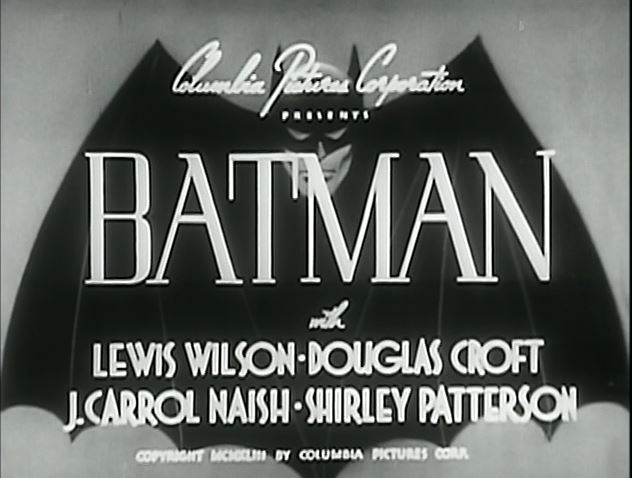



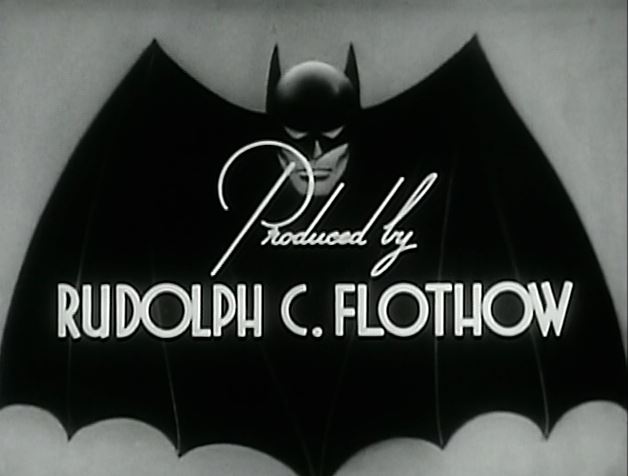

























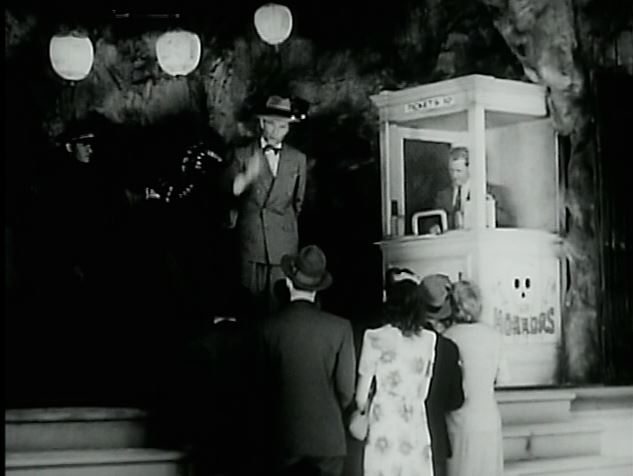





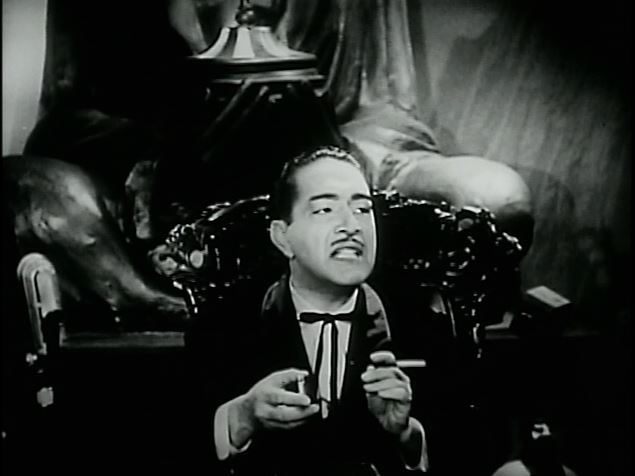












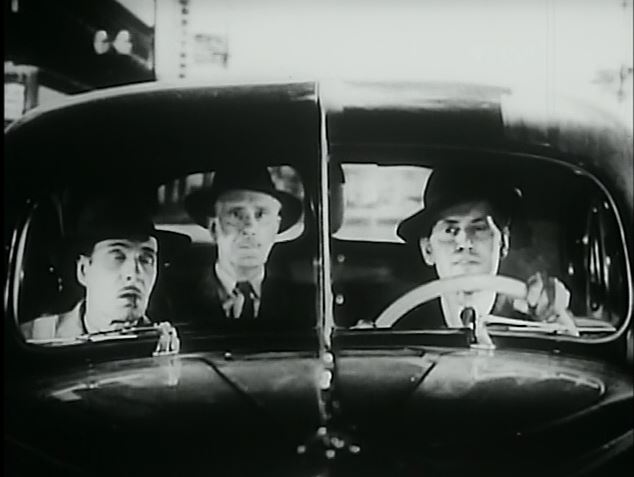

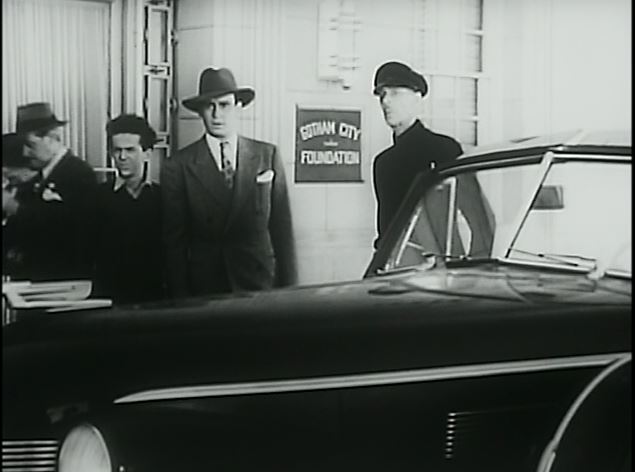












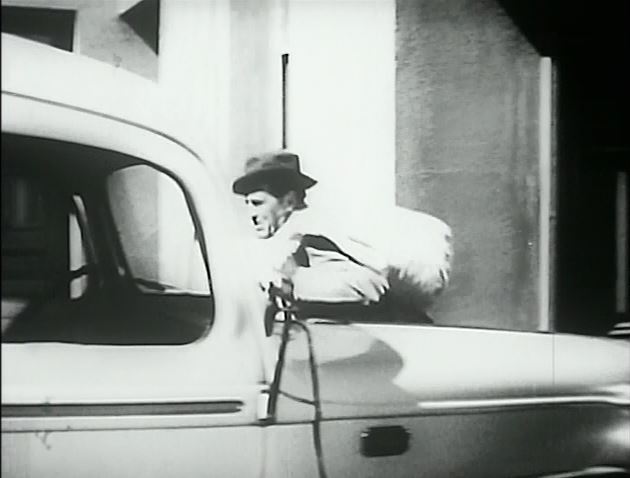















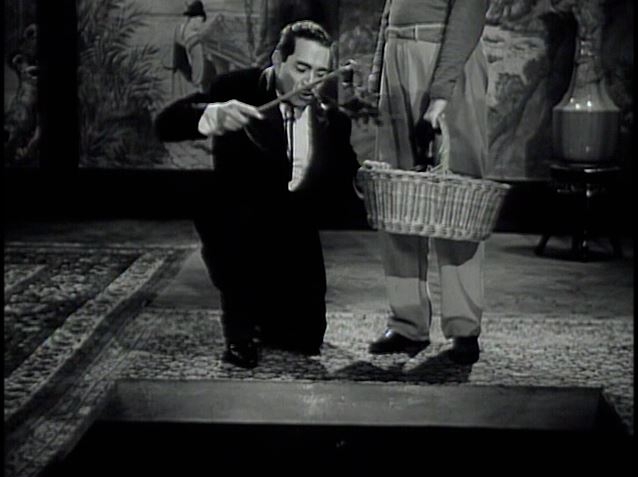










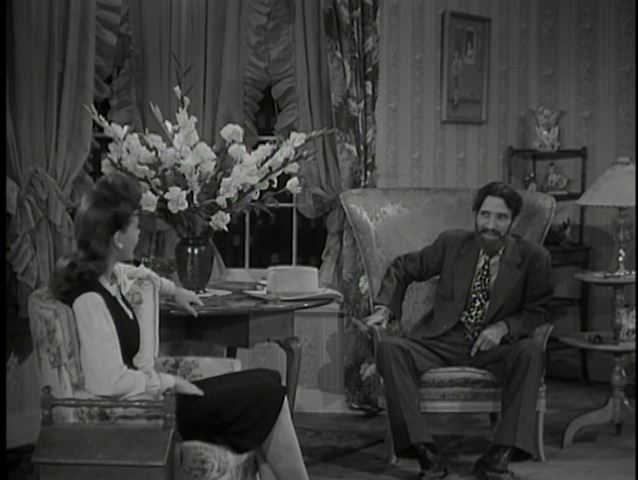



Thank you, Heather. I can't see it, but if you want to contact a blogger, go to whois and enter the domain. In this case, you can report it to abuse@godaddy.com.
ReplyDeleteI am a Republic serial girl myself but this version of Batman sounds right up my alley! I am intrigued by the very young cast and the wartime angle. I think I shall have to check this one out. Thanks so much for participating!
ReplyDeleteThank you, Fritzi. Columbias are often looser and more humorous, whether on purpose or not, than Republics. Especially fun are the ones directed by James W Horne, a former Laurel & Hardy director.
ReplyDeleteCharles Middleton as a good guy? Are they trying to mess with me?
ReplyDeleteWhen I was a kid in the 60s our local small town theatre ran a batman serial. All I recall about it is a lot of car chases, but I did look forward to it every Saturday.
Hi Caftan Woman. It is disconcerting to see Charles Middleton as a good guy, but he's not a wimpy good guy. He's a tough old coot. The serial you saw may have been the sequel, Batman and Robin. I think I remember a lot of car chases.
ReplyDeleteStop the bus! You're telling me there were Batman serials in the 1940s?! And I didn't know about this?! Sheesh! I really do lead a sheltered life.
ReplyDeleteAll that aside, I thoroughly enjoyed your post with a look at serials in general, and Batman in particular.
I'm glad you liked the post. The Batman serials are both worth visiting. There were also two Superman serials by Columbia if you're in to that kind of thing. Thanks for visiting.
ReplyDeleteWhat a wonderful and comprehensive post! I love all the film stills. I must admit my Batman knowledge starts with Tim Burton (it's not my fault - I'm a child of the 80s!) so I was amazed to discover that it dates so far back. Clearly there's a big gap in my knowledge...!
ReplyDeleteI'm very happy you enjoyed the post. I had fun putting it together. Comic book history has many interesting twists and turns. I often recommend Pappy's Golden Age Comics Blogzine to people who want to see what they were like: http://pappysgoldenage.blogspot.com/
ReplyDeleteHoly post, Batman! I loved the many things I learned with you today and I hope I can find Batman's serial, since I'm familiar with Pearl White's. The comic book cover with the firecracker exploding Hirohito, Mussolini and Hitler is priceless.
ReplyDeleteThanks for the kind comment!
Greetings!
Lê
Hi Lê. I'm glad you enjoyed it. The movie is fun if you don't try to watch it all at once. I'm also glad you liked the comic book cover. There used to be a whole blog devoted to comic book covers of characters punching Adolph Hitler. I haven't seen it for a while.
ReplyDelete